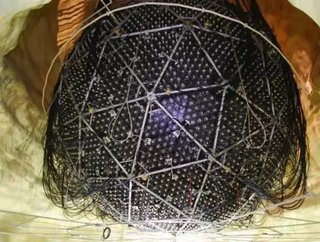Itasca: The Engineers of the Earth

Take almost any deep underground mine in the world and the chances are Itasca has had a part to play in its development. The employee-owned engineering, consulting and software firm has a global footprint with offices in the US, Australia, Canada, South America, China and Europe, and has earned a world-class reputation for geo-mechanics, unrivalled by any other. Mining Global caught up with the Richard Brummer, the founder of Itasca to speak about some of the company’s more notable projects and its innovative software solutions.
Working with SNOLAB
The CEO of SNOLAB (an underground science laboratory specializing in neutrino and dark matter physics) cited the laboratory’s underground development as one of the most challenging elements of the project and confirmed that Itasca has been instrumental in its design and build.
With a particular expertise in mine openings whereby the ore is extracted, Itasca began working with SNOLAB on how to create the openings in the ground first and foremost. “We are geo-mechanics, meaning we are engineers of the earth,” says Brummer. With a wealth of experience under its belt – “we generally advise all of the large mines around the world on how to create openings” – it was well suited to the challenge of creating SNOLAB’s laboratory 6,800 feet underground.
“It’s difficult to create large spaces at that depth owing to the rock stresses being so high. Initially we worked on the opening structure because SNO had large space requirements – they wanted an opening 50 feet in height and 20 feet in diameter. They also wanted to build a second rectangular opening on the site to provide yet more lab space,” says Brummer.
Itasca advised SNOLAB on every element of the design and build project, from its size and shape to its location on site. They developed the shape of each opening and suitable excavation methods. “We developed the excavation sequence and showed SNO how to implement it. We designed the supports for openings and advised them regarding the most appropriate materials to use,” says Brummer.
On top of this Itasca assisted SNO with its temperature controls, by indicating the best location for its sophisticated cooling systems.
Taking the Strain
All those large openings at great depth tend to close over time owing to the fact that stresses are very high underground. Problems of underground developments being contracted are common. With this in mind Itasca also developed tolerances for what would happen to the lab floors over time. “SNOLAB were holding some very expensive scientific instrumentation in there so we wanted to make them aware that the floor would actually heat up and lift a little over time. We developed tolerances for that scenario – all of the floor mounts for the equipment have adjustments on the bottom, which will allow for a certain degree of movement.”
And Itasca doesn’t only focus on the build itself; it also considers the surrounding geography and natural events that could influence its stability. For example, rock bursts (or mining induced seismic events) are commonplace around pits and thus any development on site needs to be able to withstand such movement.
“All of their equipment needed to be robust enough not to be damaged. We worked closely with SNOLAB’s scientists to educate them on the level of stress they could expect their equipment to endure throughout its lifetime,” says Brummer.
Setting the Standard
Itasca has a pretty unique level of expertise in the industry; it has the largest concentration of geo-mechanics engineers compared with any other firm. By understanding that, it becomes obvious why Itasca software is considered the global industry standard, used by hundreds if contracting and consultancy companies.
“Our company has developed all the standard numerical models for working out stresses around deep openings, and not only do we use that ourselves but we sell that software to other consulting companies that do similar work to us. Its industry standard software and its called FLAC3D or 3DEC – these are the two standard codes that anybody doing our kind of work will use - we have developed that,” says Brummer.
Itasca has a team located in Minneapolis that is charged with developing its specialist software. Because the company itself is also using the technology as well as selling it to customers, changes and new development ideas are bought to market quickly. “We are in close contact with the developers and can manipulate and modify the software right away, incorporating those new features into new versions, which we can release to everyone,” says Brummer.
Growing with People
Growth for Itasca is largely dependent on its availability to hire the right people. Its employees are all extremely qualified (all are educated with Masters degrees and a lot have PhDs) and therefore recruitment can be a challenge.
“The big constraint on growth for us is actually hiring the right people. If the right people come along we hire them because the work will develop with them, however that makes it difficult to plan our growth,” says Brummer.
However one thing is for sure, the company’s expertise is unrivalled in the industry and when the right people come along there will be plenty of mines ready to put their knowledge to the test. “Itasca designs the deep mines.” If you consider all the deep or large mines in the world, and speak to the people that operate them you will find some how Itasca has been involved there.






